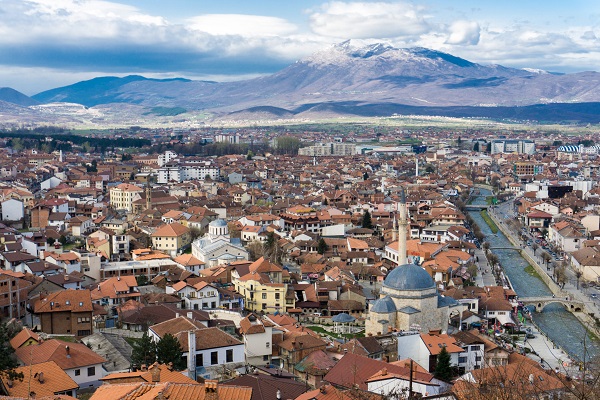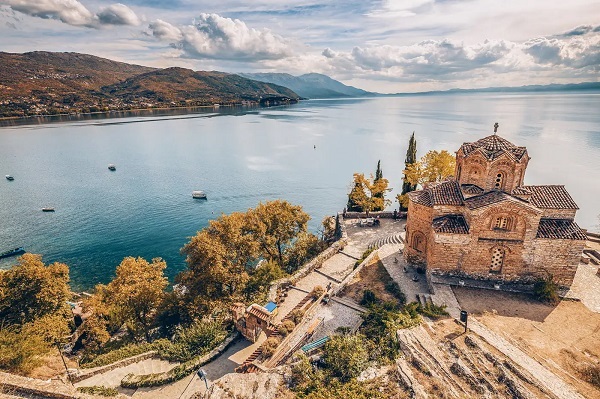Smallest European countries are continent that are abundant in natural beauty, culture, and history. Some of its nations are so small that they are easily missed, despite the fact that many of them are known for their size. These tiny countries are attractive for tourists since they each have their own distinctive cultures and traditions.
Table of Contents
The List of Smallest European Countries
Montenegro – Montenegro is a country in Central Europe. It is located on the Adriatic Sea, with its coastline on the shore of the Adriatic Sea. The country’s capital and largest city is Podgorica.
Montenegro from smallest European countries became independent from the Ottoman Empire in 1908. During World War II, Montenegro was occupied by Italy and Germany. After World War II, it became part of Yugoslavia.
In 1992, Montenegro declared independence from Yugoslavia and became an independent state. Montenegro joined NATO in 2009 and is now a full member state of NATO; however, it does not have membership in any other international organization or groupings except for international sports federations like FIFA and UEFA (Europe).

Kosovo – Kosovo is from the smallest European countries and the least populous country. The population of Kosovo is estimated at 1,811,936 as of 2014. Kosovo has a total area of 113 square kilometres (43 sq mi), which represents 0.41% of Serbia’s total land area.
Kosovo is bordered by Albania to the north; Macedonia and Montenegro to the south; Serbia to the east; and Montenegro, Bosnia and Herzegovina and Croatia to the west.
The territory of present-day Kosovo was part of Ottoman Empire from 1455 to 1912 leading to several wars between Serbia and Turkey before being controlled by Serbia from 1878 until 1912 when it became an independent state after a short-lived union with Bulgaria. Following two military campaigns led by Austria-Hungary towards Kosovo in 1912, it was annexed by Serbia in 1913 and again after World War I in 1918.

Slovenia – Slovenia which is from the smallest European countries, with a population of just over two million. It’s also one of the most beautiful countries on earth, and is known for its mountain ranges and natural beauty.
Slovenia has a long history as part of Yugoslavia, but after the fall of Communism in 1990 it has become an independent country. It has been a member state of the European Union since May 2004 and has adopted the Euro as its currency.
There are four official languages in Slovenia — Slovene (incl. Low Sorbian), Serbo-Croatian (incl. Chakavian) or Croatian (or Shtokavian), Hungarian and Italian. In some rural areas people speak a dialect called Gottscheerish which is derived from Germanic languages spoken by the first settlers in this area centuries ago.
Slovenia’s capital city is Ljubljana (pronounced Lubli-ya-na). It’s a beautiful city with lots of green space, parks and gardens around it.

Macedonia – From smallest European countries, Macedonia is the smallest country in Europe, with a total area of 10,642 square kilometres (4,206 sq mi). Macedonia has a population of 2.5 million people. It is located in the Balkans and is bordered by Greece to the south and Bulgaria to the east. The capital city of Macedonia is Skopje.
Macedonia was first inhabited by early hominins who left Africa and arrived in Europe about 400,000 years ago. From there they spread across the continent, with some groups reaching as far as Siberia and Australia.
The earliest written evidence of humans in Macedonia dates back to 7500 BC, although there are claims that humans lived here as early as 13000 BC. By 3000 BC, the Neolithic period had started in Macedonia; this period began when humans began to use tools and pottery for food preparation.
At this time, Southern Macedonia was home to many different tribes that spoke different languages; these included Illyrians, Thracians, Greek tribes like Macedonians, Ancient Romans and other groups. In 335 BC Alexander the Great conquered all of Macedonia except for Athens; however after his death his empire broke apart into smaller kingdoms.

Estonia – Estonia is a small country in the northern part of Europe, bordering Latvia and Russia. With a population of 1.3 million people, it’s one of the smallest countries in Europe by area. It’s also one of the most densely populated countries in the world.
Estonia is not only a place from smallest European countries where people are born and raised; it’s also where they die. In fact, more than half of Estonia’s population lives in its capital city, Tallinn — which means that you’ll find many Estonian residents living abroad.
The capital city is one of Europe’s most livable cities, with a quality of life that many European cities can only envy. The Estonian government has spent years making Tallinn a better place to live, investing heavily in infrastructure and services such as transportation, education and health care.

Why Visit the Smallest Countries in Europe?
The smallest European countries are a fascinating bunch of places. They’re home to small, quaint villages full of character and charm. And they’re also home to some of the continent’s most beautiful landscapes, with mountains and lakes providing endless photo opportunities.
So if you want to visit one of these smallest European countries without a huge travel budget, you’ll need some tips on how to make it work. Here are our recommendations for visiting the smallest countries in Europe:
1. Go in the summer
The best time to visit is during the summer months (between May and October), when temperatures are hot but not unbearable and there’s plenty of sunshine. This is also when most towns will have feria or markets where you can buy local produce at affordable prices.
2. Do day trips from bigger cities
Many small towns have train stations or bus terminals that connect them with bigger cities like Barcelona, Madrid or Paris — so you can easily make day trips from these cities if you don’t have much time during your stay. These smaller cities are also usually close enough that you can walk from one place to another (if it isn’t too far away).
FAQs
What is the smallest country in Europe?
The smallest country in Europe is Liechtenstein and has a population of 35,000.
What is the second smallest country in Europe?
The second smallest country in Europe is a tiny European state bordered by Italy and France. It has a population of just over 83,000 inhabitants.
Is Liechtenstein a good destination for winter sports?
Liechtenstein is a good fit for winter sports. The country is small enough to explore, with an abundance of natural beauty and activities. From the scenic Alpine peaks down to beautiful valleys, there are countless parks, hikes and outdoor adventures you can explore together.
